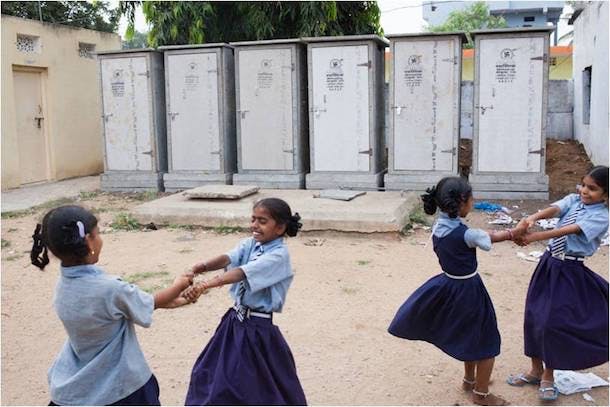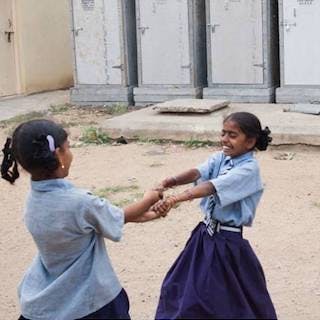
By Sanjay Banka, Managing Director of Banka BioLoo and a Steering Committee Member for Sanitation and Water for All
Sanitation facilities in many developing countries, such as India, are alarmingly poor. According to the World Health Organization, 2.4 billion people do not have basic sanitation facilities such as toilets or latrines. Of these, 946 million defecate in the open.
Of the nearly 1 billion who defecate in the open, India is home to 600 million people (half of the country’s population) who have no access to toilets. People are forced to defecate in the open.
This poses health hazards, raises environmental concerns, and leads to water contamination. This is coupled with the Indian Railways’s open-chute toilet system wherein the human waste drops on the rail tracks. Untreated fecal matter lying in the open is a grave threat to the well-being and good health of the society and the environment and a threat to sustainable living.
Women and children are major sufferers of the absence of water, sanitation, and hygiene (WASH) facilities. Women are susceptible to gender-based violence and molestation, face health concerns, and feel loss of dignity when they defecate in the open. Children fall sick due to water-borne diseases caused by inadequate sanitation, including 280,000 diarrheal deaths annually. Many other issues such loss of productivity, high expenditure on medication, school drop-outs, and absenteeism are the results of the absence of sanitation.
Since the dawn of the Sustainable Development Goals (SDGs), governments, civil society organizations, and the private sector are working toward providing safe and clean water and adequate and improved sanitation to citizens.
While governments are supporting the creation of water and sanitation infrastructure, civil society organizations are exhorting people to use toilets through behavioral change programs. The private sector (large and small companies) is playing multiple roles: providing water and sanitation to the remotest areas through innovative market-based solutions; using philanthropic capital to create WASH infrastructure – including corporate social responsibility budgets; and providing water and sanitation to their employees and workforces through initiatives such as WASH4Work.
In the effort to meet SDG 6, multi-stakeholder partnerships such as Sanitation and Water for All(SWA) are playing a vital role by bringing all the stakeholders on a common platform and supporting countries in their goal of providing WASH to all. At SWA, “Partners work toward a common vision of sanitation, hygiene, and water for all, always and everywhere.”
In most of Asia and Africa, basic water and sanitation services are provided by small and medium businesses, also referred to as social enterprises, as they help solve a crucial social problem.
India-based Banka BioLoo made a commitment to provide affordable and sustainable sanitation through Every Woman Every Child. The company has been relentlessly working to attain SDG 6 by collaborating with government bodies, Indian Railways, state-owned enterprises, public sector undertakings, publicly-listed and private companies, foundations, non-profit organizations, and construction, infrastructure, and plantation companies to provide sustainable bioloos in communities, schools, homes, institutes, offices, hotels, hospitals and health care facilities, work sites such as manufacturing facilities, factories, mines, and of course in trains.
Banka BioLoo’s solutions help:
- Meet the need for basic, easy-to-install, and hygienic human waste disposal mechanisms in areas with no current infrastructure facilities; and
- Address the need for a cheaper and easy-to-operate alternative to the traditional waste disposal system.
The bioloo – a simple toilet shelter attached to a small bio-digester tank with bacteria placed in it – treats the human waste at source. There is no need to transport the waste, no spoiling of the environment or groundwater, and no need for energy nor heavy infrastructure.
On the contrary, the system gives pathogen-free water that can be used for gardening and agriculture. For larger systems, biogas can be collected and used for heating and cooking. Bioloos can be installed anywhere – across terrains, in remote and hilly areas, and in hot and cold regions. The bio-toilet system disposes human waste in a 100% eco-friendly manner – saving energy, conserving water, and producing bio-gas.
The bioloos have:
- Enabled access to hygienic sanitation to families, schools, members of the public, on-site workers, and notably to rail passengers; and
- Treated human waste and saved or recycled water. As effluent water from the bio-toilet system is re-used, the need for fresh water from municipal sources is reduced.
Railways’s bio-toilets have ensured better hygienic conditions for millions of people living near tracks. Families and communities with access to bioloos don’t defecate in the open. Their health has improved as human waste is not littered. Women who use bioloos are safer and have a sense of dignity. Drop-outs and absenteeism (more so of girl students) in schools have considerably been reduced according to a study by Dasra5.
Similar to the bio-toilets installed by Banka BioLoo in India, there are numerous innovative and affordable water and sanitation solutions on this planet that are contributing to the achievement of SDG 6. All such enterprises are, primarily, serving the marginalized and vulnerable populations, bringing WASH within reach.
This post is part of the “SDG Solutions” series hosted by the United Nations Foundation, Global Daily, and +SocialGood to raise awareness of ways the international community can advance, and is advancing, progress on the Sustainable Development Goals. As the international community prepares to gather at the UN for the High-Level Political Forum on Sustainable Development from July 10-19, this series will share ideas and examples of action. Previous posts in the series can be found here.
Banka BioLoo is a part of the Every Woman Every Child movement, launched in 2010 and led by the UN Secretary-General, to intensify commitment and action by governments, the UN, multilaterals, the private sector, and civil society to keep women’s, children’s and adolescents’ health and wellbeing at the heart of development. As a multi-stakeholder platform to operationalize the Every Woman Every Child Global Strategy for Women’s, Children’s and Adolescents’ Health, the movement mobilizes partnerships and coordinated efforts across sectors to ensure that all women, children and adolescents not only survive, but also thrive to help transform the world. Learn more: http://www.everywomaneverychild.org/

